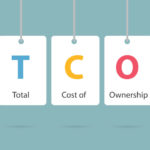
When it comes to cybersecurity, protecting your accounts from unauthorized access is a basic but crucial step. Multi-factor authentication, or “MFA” for short, requires additional identity verification forms to decrease the likelihood of cyberattacks. According to Microsoft, 99.9 percent of attacks can be prevented by adding multi-factor authentication.
MFA adds another layer of security to sensitive data and deters hackers looking for easy targets without adding too many complicated steps for authorized users. Today, we’ll go over how multi-factor authentication works, different MFA types and how MFA can protect your business.
What Is Multi-Factor Authentication?
Multi-factor authentication, or MFA, requires a user to provide two or more authentication factors to access protected resources, such as accounts, corporate data or a secure network. Rather than simply relying on a username and password, MFA requires other verification, decreasing the potential of infiltration.
You’ve likely encountered multi-factor authentication before. If you’ve ever used an ATM, you’ve used MFA: Once you swipe your bank card at the ATM, you’re required to enter your PIN, which is an additional factor used to further secure your account.
The most popular MFA factor is a one-time passcode or password, or OTP. An OTP is a 4- to 8-digit code sent via email or SMS or to an authenticator app on your mobile phone. Whenever you log into an account and submit an authentication request, a new code is generated. An OTP is usually a time-based passcode that expires in a matter of minutes.
Two-factor authentication (2FA) is a popular form of multi-factor authentication. However, unlike 2FA, multi-factor authentication is not restricted to just two factors. Attackers can easily bypass email-based 2FA. They hack into your email account, request a password reset for one of your accounts and use the code sent to your email to gain access to your account and lock you out.
Types of MFA
Most MFA authentication includes some combination of the following factors:
- A knowledge factor, or something you know, such as a password, a PIN or answers to security questions
- A possession factor, or something you have, such as a physical token, an authenticator app or a one-time password sent via text or email
- An inherence factor, or something you are, such as a biometric identifier like your fingerprint, voice or retina
For example, you can configure your MFA to require a username and password (a knowledge factor), an OTP sent via SMS text message to your mobile device (a possession factor) and an additional verification in an authenticator app (another possession factor).
A survey from Google found that at least 65 percent of people use the same password for most of their accounts. This makes it all too easy for hackers to gain access to users’ accounts in phishing attacks. Multi-factor authentication is the most recommended way to secure your accounts because it adds several security layers beyond a basic username and password.
Sometimes MFA uses an additional form of authentication known as location-based authentication, which looks at a user’s IP address and, if possible, their geographic location. If this data doesn’t match up with a list of approved IP addresses or the area falls outside a certain radius, the user will be blocked to prevent unauthorized remote access.
Another form of multi-factor authentication is risk-based authentication. This authentication process looks at contextual information and behavior, like the time of access or the device used, and assigns a risk level. For example, if someone tries to access an account in the middle of the night, that could be considered suspicious behavior. The user might then need to enter a code sent to their mobile device to log in.
Multi-Factor Authentication Examples
MFA plays a critical part in your IT security strategy. Not only does multi-factor authentication verify that authorized users have access to sensitive data, but it also deters attackers who often take advantage of weak passwords to infiltrate accounts. Here are three ways you can use MFA to improve your cybersecurity.
1. Verify User Identity
One of the biggest threats in the cybersecurity world today is identity theft. A traditional username and password are no longer enough to protect your data and accounts from cybercriminals. But with MFA, you can supplement login credentials with an additional layer of protection, like an OTP sent via SMS or shared in an automated phone call.
2. Meet Compliance Requirements
Besides preserving your company’s reputation, protecting consumer data is required by many IT compliance regulations. For example, the PCI Standard, or PCI DSS, requires that any business that handles credit card data needs to identify and authenticate access to system components. Multi-factor authentication is an easy and highly effective way to control access to sensitive data like payment information.
3. Use Single Sign-On (SSO) Solutions
Many MFA solutions are compatible with SSO. Instead of creating a unique username and password combination for every account, you can use one SSO account with multi-factor authentication to make access easier for authorized users without compromising security. This can save time while still verifying a user’s identity when they try to log in.
Let Helixstorm Help You Adopt Multi-Factor Authentication
While the cybersecurity landscape is constantly evolving, you can easily and effectively protect your business from threats by adding multi-factor authentication to your accounts.
At Helixstorm, our team of technical experts has decades of experience to help you adopt multi-factor authentication without disrupting your IT operations. Our dedicated team can support all the technologies, devices, tools and processes your business relies on. And after adding MFA, you’ll have peace of mind that multiple layers of security protect your data.
Contact us today to learn how our managed IT services can help boost your organization’s cybersecurity strategy.


